Momentum is a term we frequently hear used to identify when a team exhibits dominance over their opposition. This might be over prolonged periods of time, either in-game or across the course of a season. It can also refer to those pivotal moments in a game when a team seems poised to score. But what exactly is momentum? Join us as we explore the concept of momentum and it’s influence on team success.
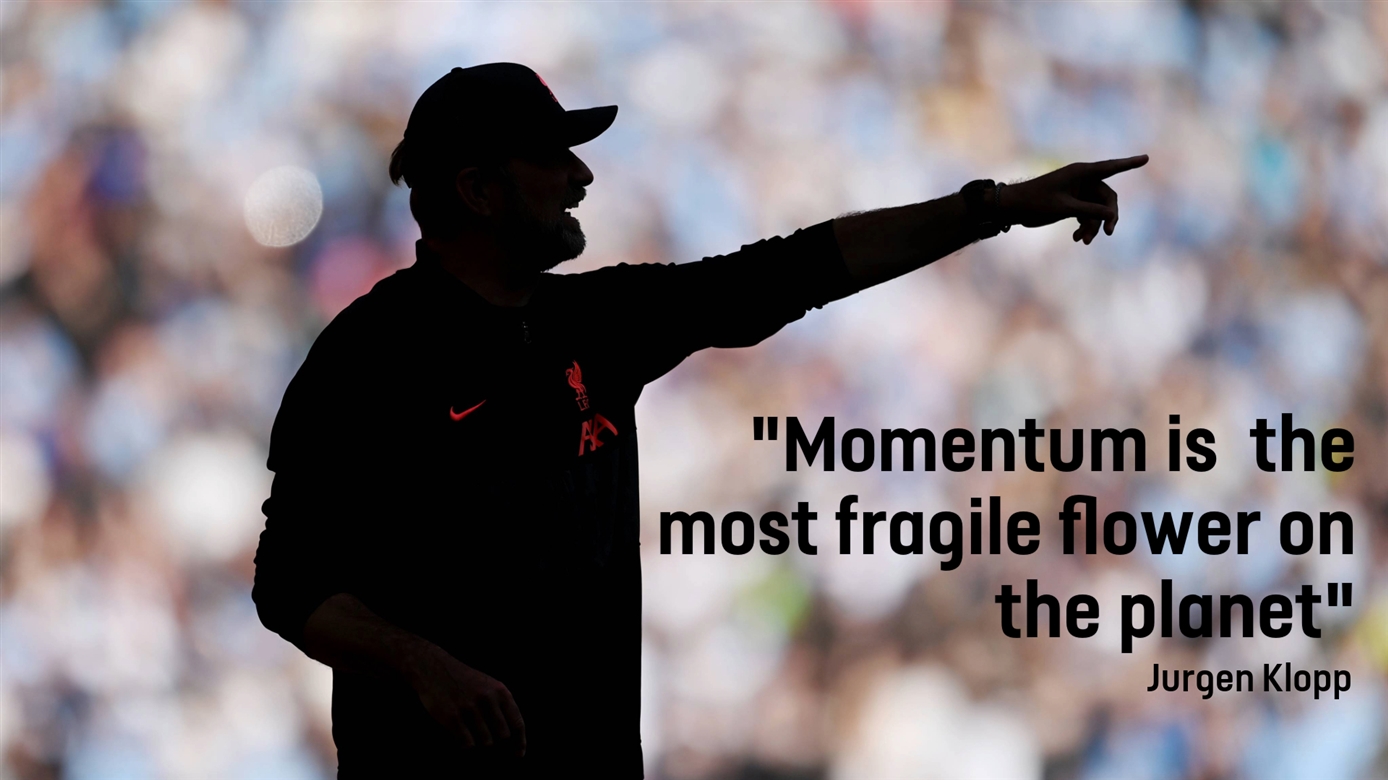
Defining momentum
Momentum can be a difficult concept to explicitly define as it can look very different for different teams. A team like Manchester City for example often rely on large periods of dominance where they can position their players higher up the pitch, forcing their opposition into a low block. Other teams however may be happy to surrender possession as it can be a platform from which to spring a counter attack. A strategy that helped Leicester City stun the footballing world by winning the 2015/16 Premier League.
Ultimately, momentum is largely psycho-emotional and tactical, referring to the flow and feel of a game. Internally for us as coaches it can be driven by a strong emotional response to an action such as a goal, key tackle, or refereeing decision. Because momentum can be lost just as quickly as it is gained, it is essential that both coaches and players can regulate their thoughts and emotions in critical moments. Maintaining composure and sticking to your key principles and game plan can be the difference between sustaining momentum or letting it slip away.
Momentum charts
Momentum charts have been become increasingly prevalent across data providers and broadcasters and it is important we understand how they work to gleam meaningful insights. The charts we use throughout this blog use a metric called expected threat differential and is defined by data provider Twenty3 as the chance a goal will be scored in the next five actions. The momentum chart then takes this information and displays it in comparison to the opposition to show which team was more dominant in a particular period of time. Take the example below which shows the momentum chart displayed for the 2024 FA Cup Final and demonstrates how Manchester City posed a greater threat throughout the game than their opponents. We will explore later however how this may not always be a problem for teams who don’t have momentum.
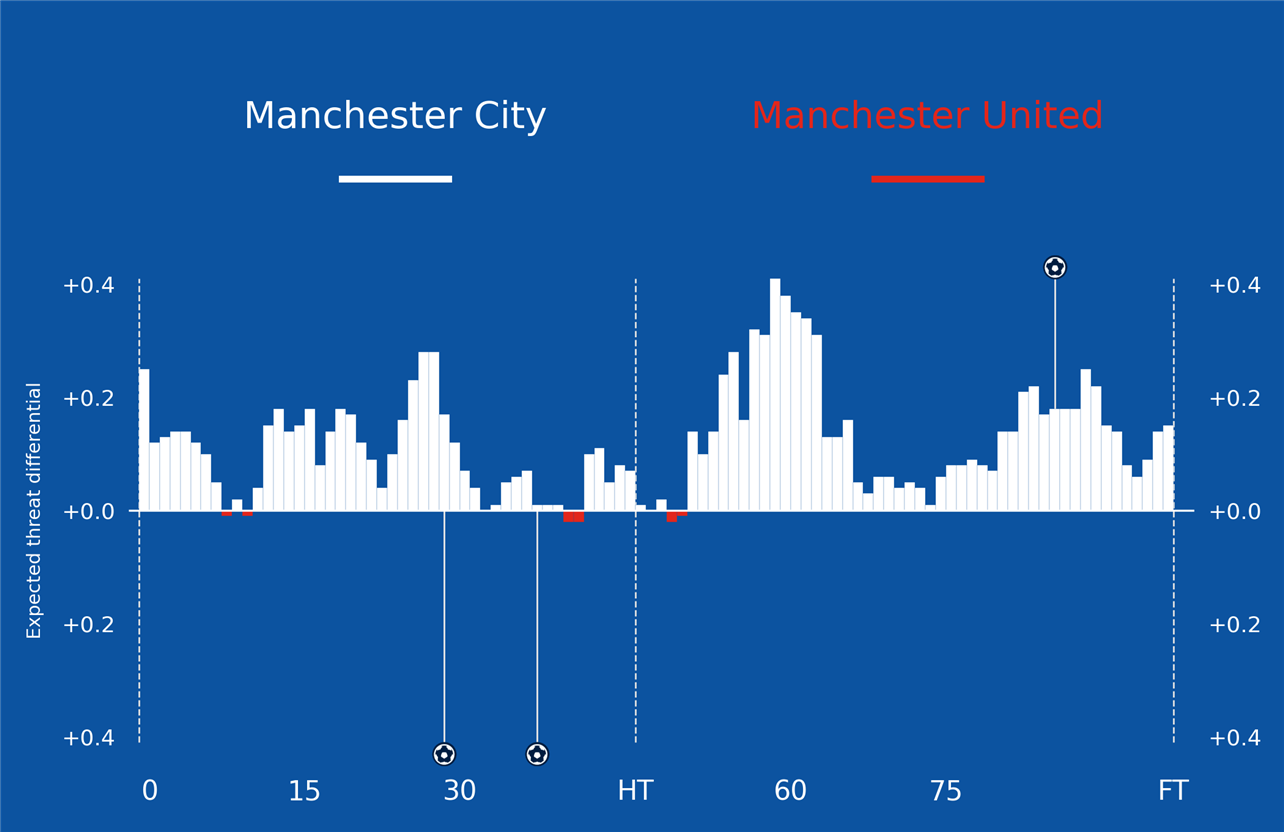
Factors impacting momentum
Momentum can be impacted by many different things, and although goals may be the least common event in a game, they can be one of the greatest influencing factors on momentum. Despite the score-line being the most important stat, it doesn’t always tell the real story of how a game played out. Take Aston Villa’s Champions League tie against Bayern Munich for example. Despite being at Villa Park, Bayern had almost double the possession and created 17 shots on goal compared to Villa’s 4. However, they were unable to find the opening goal and Villa capitalised on this to win the game 1-0.
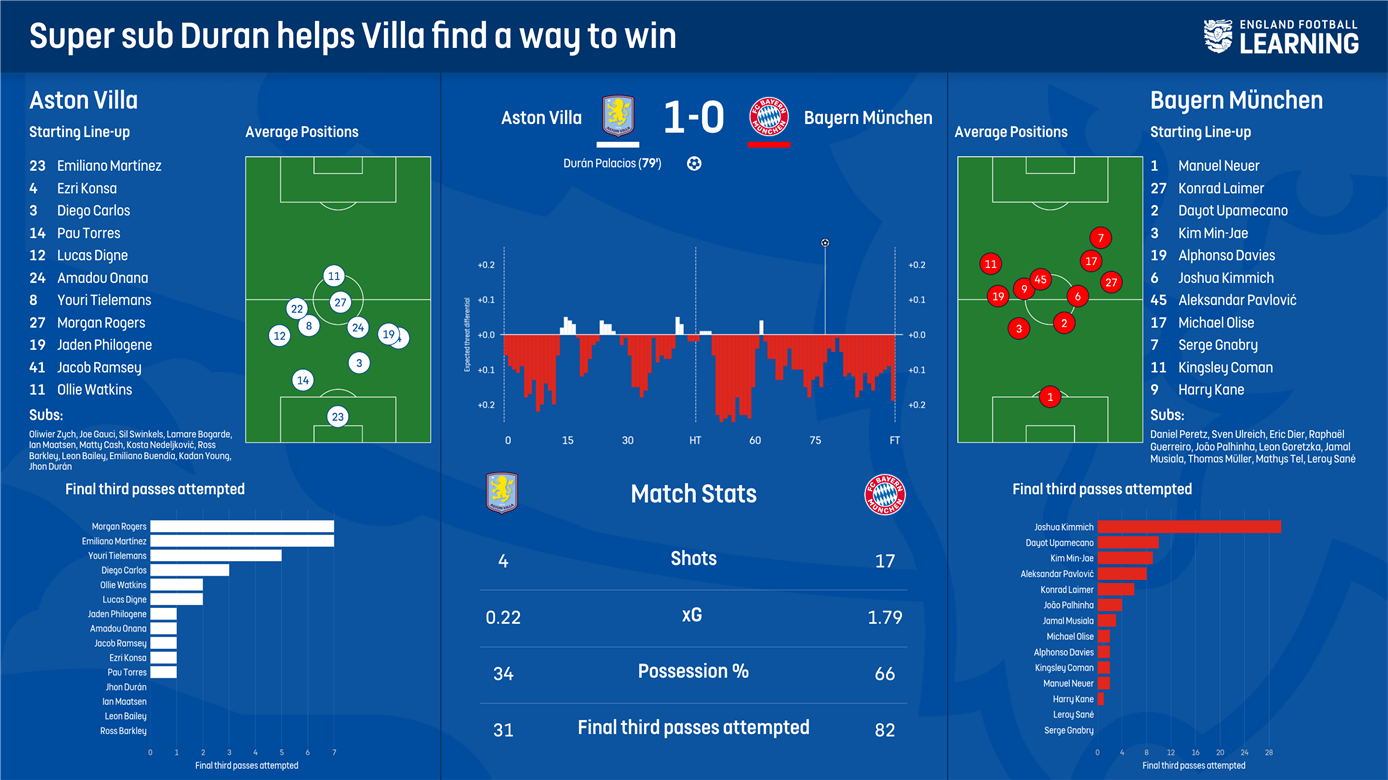
Another factor that can impact momentum is individual player or referee decisions. Arsenal’s Premier League tie against Manchester City in September was a great example of this. With the scores locked at 1-1 Arsenal gained momentum by playing the ball in-behind for Bukayo Saka to run at Man City’s full back, before finding Rice with an overlapping run, leading to a corner. This put Arsenal in a situation that has provided high levels of success for them this season with 36% of their goals coming from set plays.
From the resulting corner Arsenal took the lead, however it wasn’t long before Leandro Trossard was sent off following a second yellow card. The impact of this can be seen in the chart below, with Manchester City increasing and then sustaining their level of threat and momentum for the second half of the game, eventually finding the equalising goal deep into stoppage time.
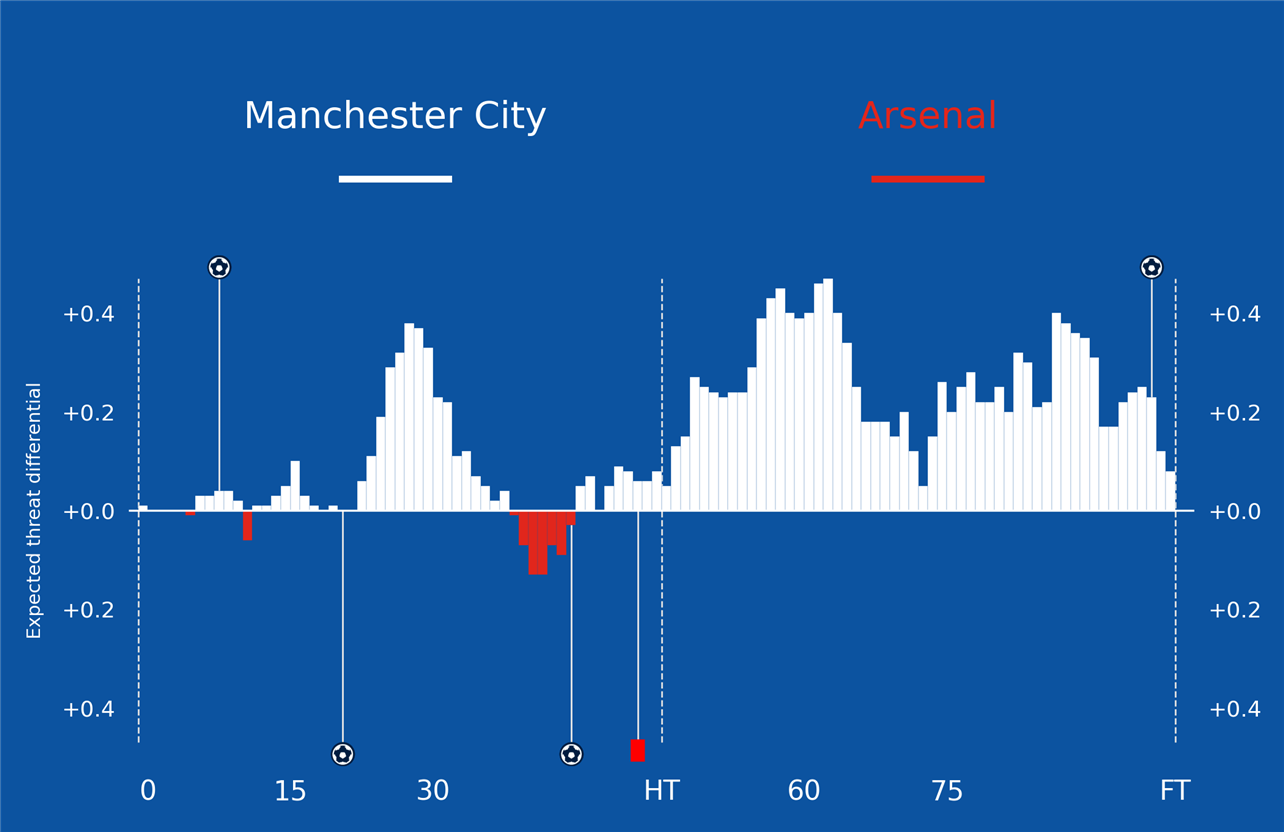
Manchester City vs Manchester United (FA Cup Final)
Momentum charts like these offer a useful snapshot of how a game unfolded. However, they don’t always capture the full picture, prompting the question: “Can a team succeed without relying on possession to build momentum?” To dive deeper into this idea, let’s examine the Men's 2023/24 FA Cup Final.
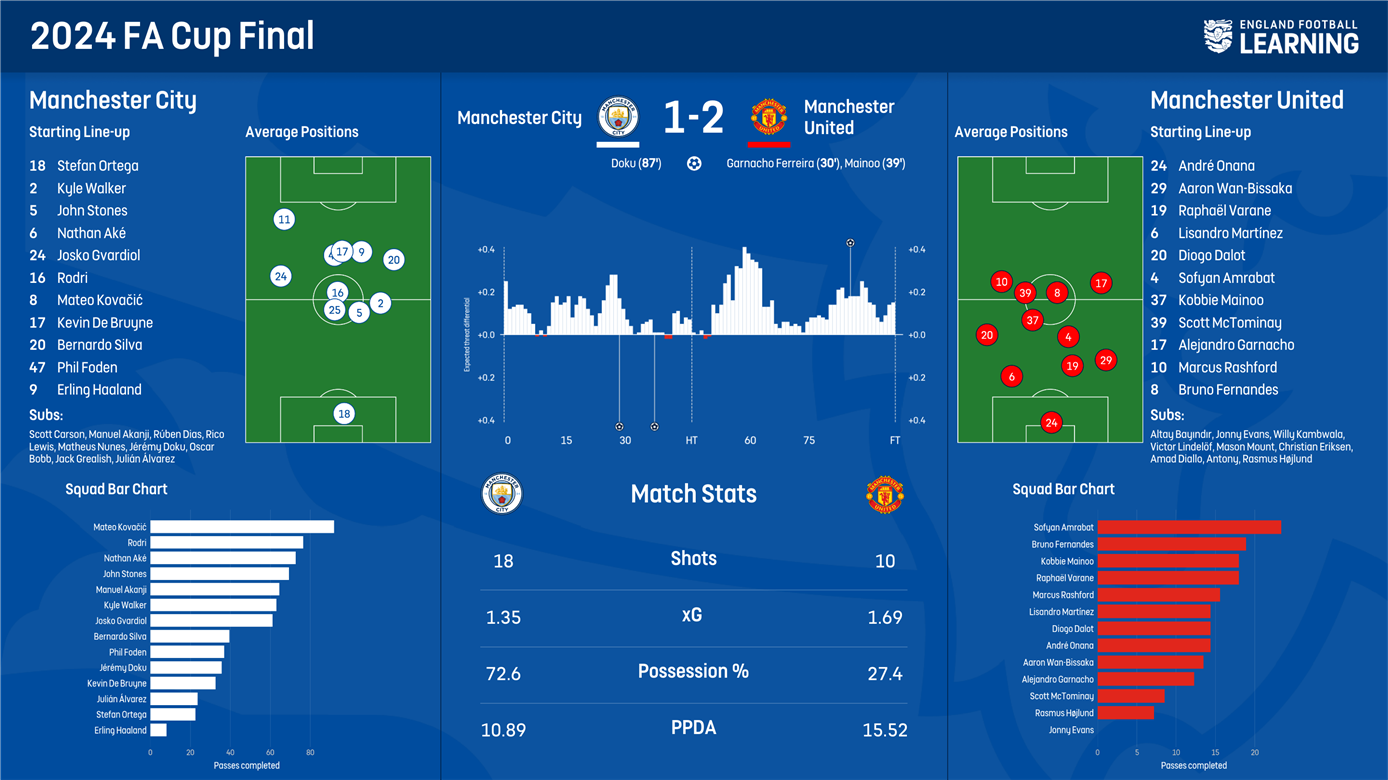
Manchester City were heading into the FA Cup Final as many people’s favourites to lift the trophy. Using only possession and shot attempts it paints a picture of Manchester City dominance across the game, having 73% of possession and 18 shots to United’s 10. However, possession alone does not guarantee goals and despite having fewer attempts on goal Manchester United achieved an xG of 1.69, higher than City’s 1.35. Why is this important? Well, watching the video below you can see that United were comfortable with City having the ball for large periods of the game as long as they stayed compact.
Adopting this strategy meant that United could rely on catching City off guard with fast and creative attacking players they were able to spring attacks from an organised defensive structure and exploit space behind City’s back line. This strategy led to the ultimate success with their second goal which you can see below, where they played quickly behind on transition and created a 4v3 overload around City’s penalty box before Mainoo finished off the move with a measured finish into the bottom corner of Ortega's goal.
Considerations for coaches
As can be seen from the examples throughout this blog, momentum can look different depending on the attributes and abilities of a team and the individuals within it. With this in mind:
- How do you look to gain momentum for your team?
- How do you manage your emotions on a match day to support more effective decision making?
- What are the key strengths and attributes within your squad? And how can you maximise these on a match day?


